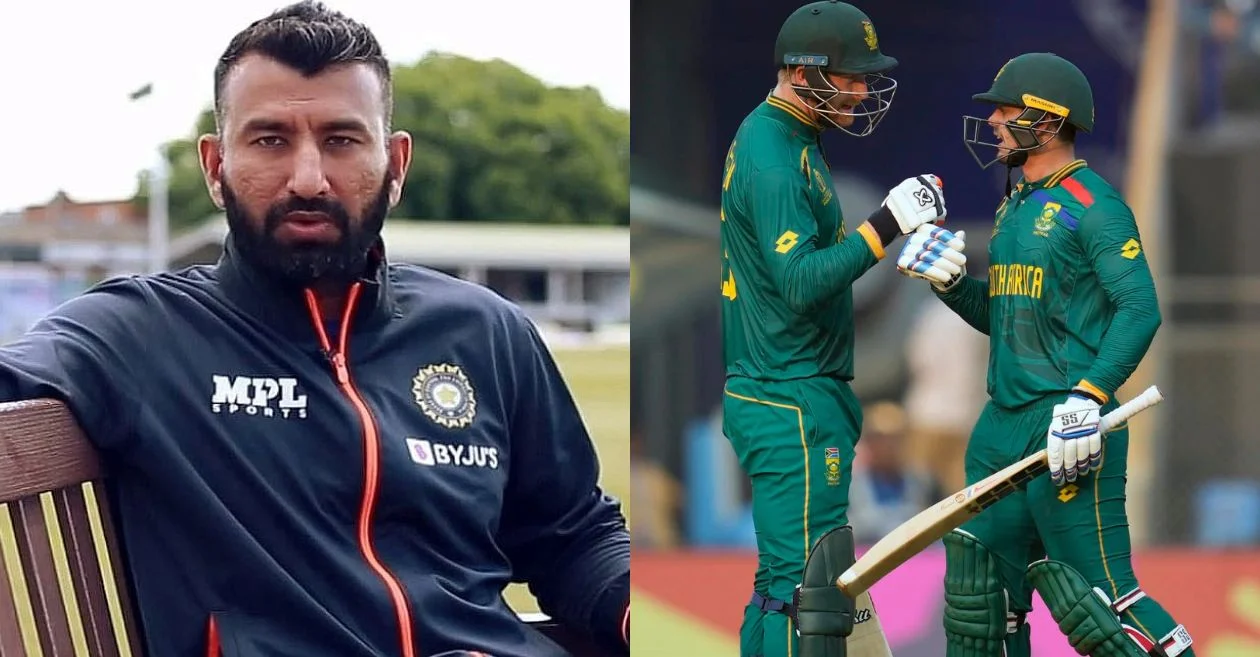South Africa are making waves in the ODI World Cup 2023, establishing their dominance with a series of consistent performances. The Proteas have been on a dream run, securing four wins out of five matches in the tournament. Led by Temba Bavuma, South Africa currently occupies the second spot in the points table and boasts the best net run rate in the competition, standing at an impressive +2.370.
Battering their way to glory
South Africa’s supremacy in this edition of the World Cup can be attributed to their batting prowess. The Proteas’ batters have been in outstanding form, resulting in the team posting massive scores. On three occasions, South Africa has surpassed the 380-run mark in the ongoing multi-team tournament. They hold the distinction of being the only team to breach the 400-run milestone in World Cup 2023, achieving a formidable 428/5 against Sri Lanka on October 7.
Pujara’s observations
The question arises: what is the secret behind South Africa’s effective strategy for amassing massive totals in this World Cup? Senior Indian cricketer Cheteshwar Pujara has analyzed their approach and identified the Proteas’ smart tactics. Pujara emphasized that South Africa’s batting strategy is characterized by thoughtful planning. They don’t merely go after the bowlers right from the outset but carefully consider their approach. Pujara pointed out that they know precisely when to accelerate, when to build partnerships, and which bowlers to target.
Also READ: AB de Villiers reveals why Rohit Sharma can lift the World Cup 2023 trophy for India
“They are doing it smartly. If you look at their batting, I mean, it’s not that they are just going after the bowlers from the first ball onwards; there is a thought process about it. They know when to accelerate, they know when to build a partnership, the bowlers to target, and I think they are doing it really well,” explained Pujara in a video shared by ESPNcricinfo on X.
Late-innings mastery
Pujara further noted that South Africa’s strategy includes not losing wickets early in the innings, which positions them well to capitalize in the slog overs.
“If you don’t have enough wickets in the last 10 overs, then you are always in trouble. They are ensuring that even if the run rate is not on the higher side within 40 overs, they can always make it up in the last 10 (overs),” added Pujara.
